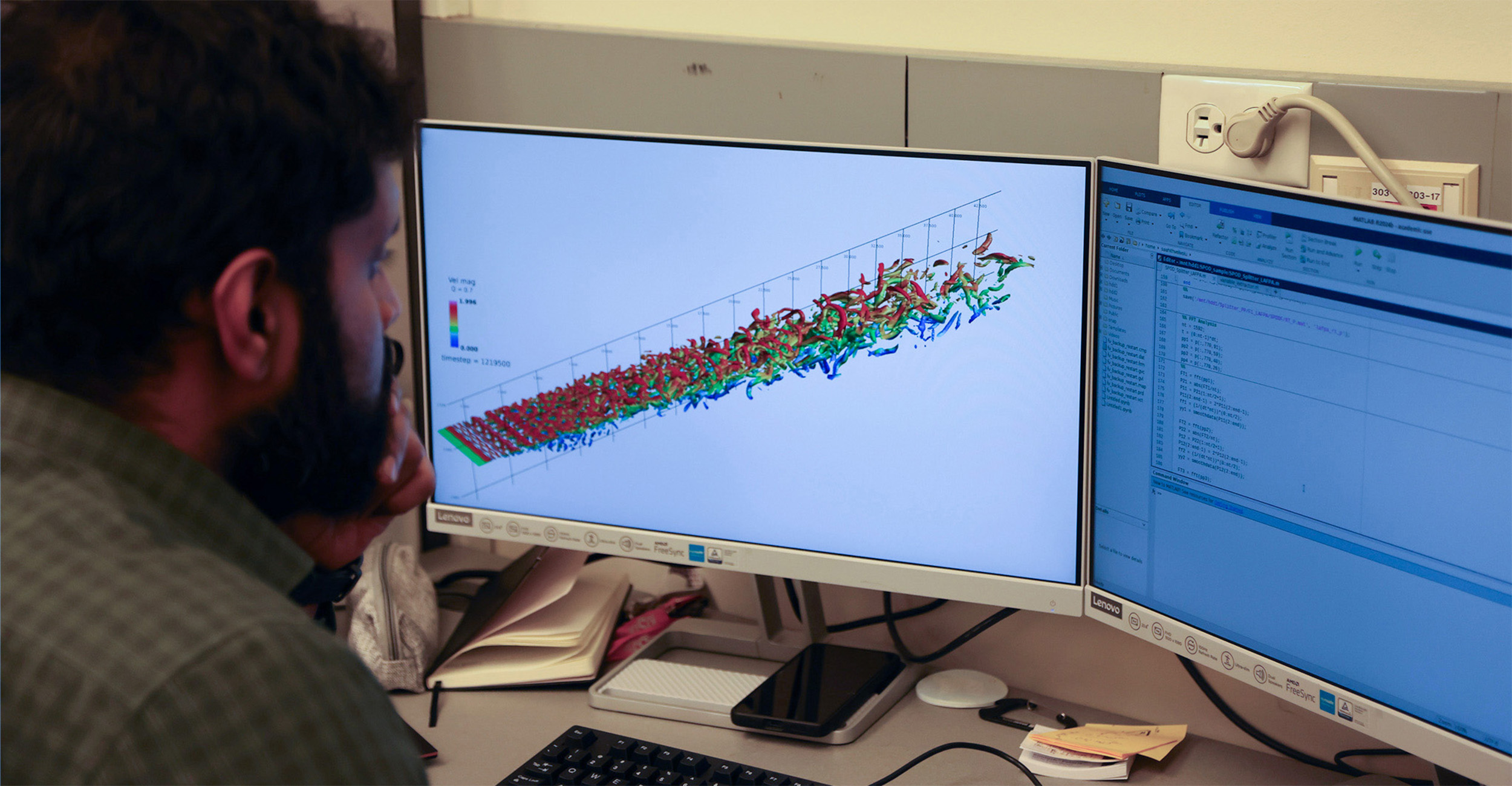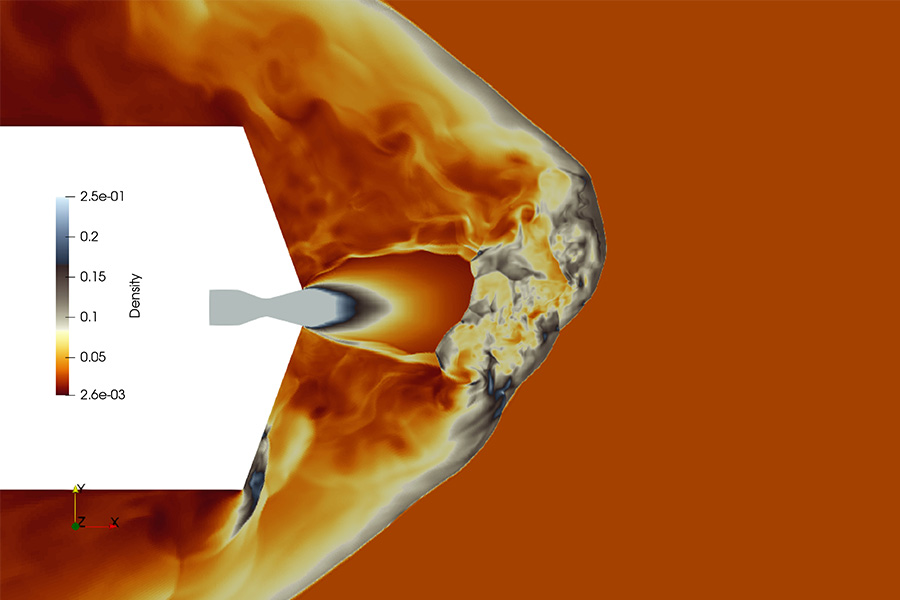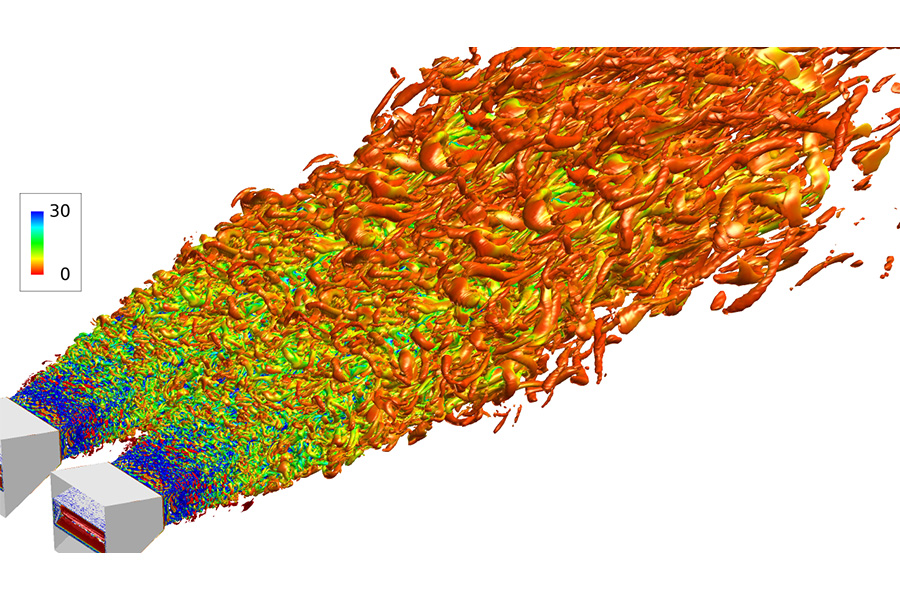
MAE students gain experience simulating aircraft airflow velocities
Thursday, April 3, 2025
Media Contact: Tanner Holubar | Communications Specialist | 405-744-2065 | tanner.holubar@okstate.edu
Students in the School of Mechanical and Aerospace Engineering in Oklahoma State University’s College of Engineering, Architecture and Technology are learning how to simulate the airflow in and around different aircraft components under the oversight of Dr. Chitrarth Prasad, an assistant professor in MAE.
In CEAT’s Flow Physics Simulation Laboratory, Prasad and his students work on numerical simulations of problems that are of interest to the Department of Defense and NASA. Through a National Science Foundation grant, his team uses supercomputers in Texas and Pennsylvania to produce highly detailed simulations. Prasad said the simulations are so detailed that they surpass what can be measured in experiments. Their research involves simulating the entire three-dimensional flow in and around different aircraft components, considering variables such as velocity, pressure and temperature.
Things that have been simulated so far at FPSLT include turbulent boundary layers to understand the extremely high heat transfer at supersonic and hypersonic speeds; supersonic jets impinging on the surface for Naval and manufacturing operations; flow over wings to develop unconventional drag reduction approaches; supersonic retro propulsion to enable human-scale landings on Mars; and supersonic jets from military and commercial nozzles to reduce aircraft noise.

Prasad was involved in this type of research in the High-Fidelity Computational Multi-Physics Lab at Ohio State University when he was a postdoctoral researcher. Prasad came to OSU in the fall of 2023 and has added elements to the coursework and the laboratory to bring this research to Stillwater.
He teaches a course called computational fluid dynamics, where undergraduate and graduate students can learn the intricacies of creating fluid simulations. He broadened the scope of the course by having students focus on current problems NASA or the DOD are focused on.
He also updated a course on computer methods in which undergraduates learn the early techniques of what is applied in this simulation research.
“Sometimes we teach concepts that have been taught for generations because the fundamentals don’t change,” Prasad explained. “But you can apply the same concepts to more modern problems. That’s where I come in. I link something they are learning to something of interest right now rather than something that was of interest 20 years ago.”
A current project that began in January 2024 involves studying the impact of acoustic waves created by supersonic jets impinging on the ground. This phenomenon is especially relevant to Naval aircraft such as the F-35B, an aircraft with short takeoff and vertical landing capabilities used by the U.S. Marine Corps.
When these fighter jets take off or land vertically, their exhaust hits the ground, generating intense acoustic waves, which are detrimental to the aircraft as well as the people around.
“That can have catastrophic consequences such as hot gas ingestion into the engine, structural fatigue of engine components and impacting an aircraft’s stealth coating,” Prasad said. “It’s also harmful for people as well because a ship only has so much space. We need to understand how these acoustic waves are generated before we can try to figure out how to control it.”
Prasad’s team takes on a variety of projects, and he has them focus on three main concepts:
- Simulate the three-dimensional, unsteady flow; this generates a tremendous amount (terabytes) of data.
- Analyze the data using advanced mathematical and data-driven techniques.
- Explain the findings by leveraging existing or developing new theories.

“If you have a basic grasp of those three concepts, you can apply it to any new problem,” Prasad said. “But when students are so focused on one aspect of one aircraft type, their perspective can become too narrow. I want them to have a much broader approach to problem-solving because while they are working on one thing, they need to know how that can apply to something else.”
Prasad also teaches his students to focus on their methods and see how those look when applied to another problem someone else is working on. His goal is to foster collaboration among the team as they work through various projects together.
His team has undertaken many projects, and he is pleased to see the work on high-speed flow research continue to grow.
“We are looking at hydrodynamic flow problems; we’re looking at bio-inspired stuff, which I never would have thought of doing before. I also started working on drones because why not? It’s growing a little faster than I would have expected, but that’s not a bad problem,” Prasad said.
